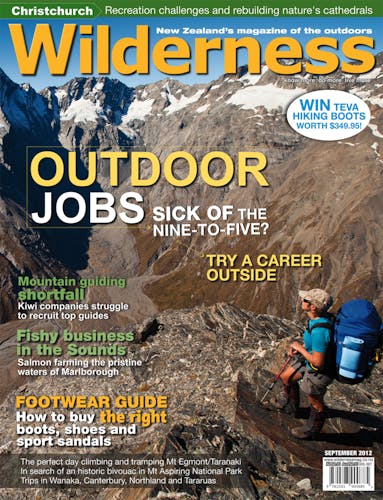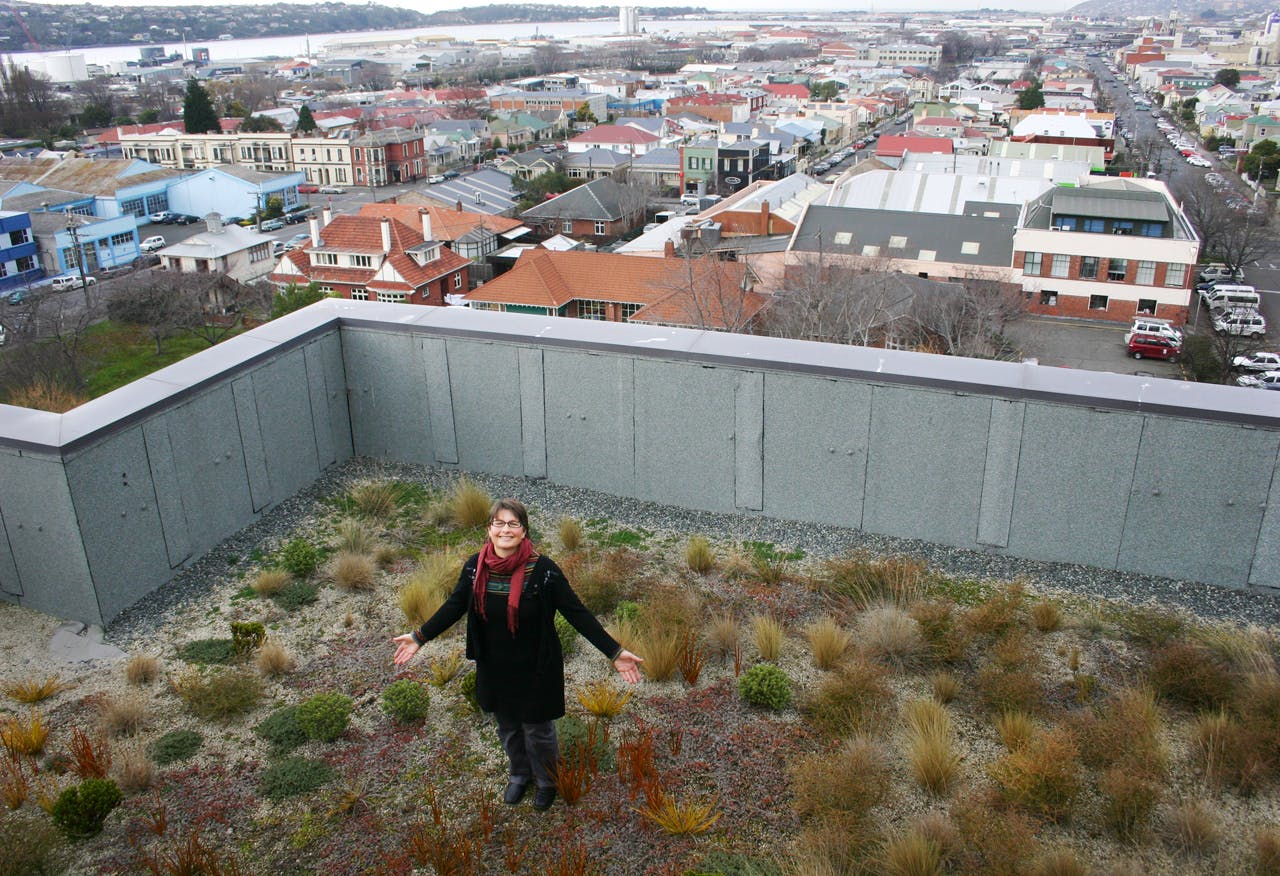Every time you lean back from your desk, stretch, and stare out the window, if you’re lucky enough to have one, do you dream of a mountain, river or bush view, instead of the neighbouring office block? Edith Leigh talks to four people who are stunned by the landscape and environment nearly every day they go to work
The botanist
Anybody looking for Dr Janice Lord come summer shouldn’t bother trying her office.
Instead the University of Otago botanist will be in her ‘laboratory’ on top of a mountain, somewhere in the backblocks of Otago.
Alpine plants, in particular those pollinated by insects, are Lord’s passion.
They make fantastic study subjects, she says. The plants flower in the summer, the insects are only out and about when the weather is nice, and they generally don’t start up until 10am, “so you can even have a sleep in”.
Formerly a keen mountaineer and rock-climber, a “eureka moment” during her first year of university study led Lord to switch to botany.
A lecture about alpine tree lines caught her imagination and made her realise she didn’t want to be “stuck in a lab with a lot of test tubes”.
Lord went on to do a doctorate, which saw her researching hard tussock in Arthur’s Pass National Park for three years. Her career has since taken her up volcanoes in South America and to the isolated, windswept sub-Antarctic islands south-east of New Zealand.
Much of Lord’s research is now focused in Otago. The Remarkables, near Queenstown, and the inland Rock and Pillar range are her favourite research areas, where she likes “having the whole mountain to myself”.
When she is working in the Rock and Pillar’s, her accommodation is at Leaning Lodge, which is the cutest, little tramping hut, she says. “It is real old school and the long drop has got the best view.”
Not all of her research, however, is always focused on the same area.
“What I really like to do is go off and explore a ridge, so I do occasionally design a research project around that. You can answer a research question in a number of ways so you may as well choose a way you enjoy.”
Knowledge of botany allows a person to not just see the landscape, but understand it, Lord says.
“You get the whole picture because you can read the story that’s written in the plants.”
At a glance
Qualifications: The University of Otago is the only New Zealand university offering tertiary study in botany. A degree in botany will qualify you to work as a research or field assistant, while further study, such a masters or doctorate, will enable you to become a research associate or do independent research.
Hours: Forty to fifty hours a week. Research assistants and technical staff get time in lieu, overtime or an extra allowance for field work.
Pay range: Qualified research assistants can start at about $43,000, and pay scales go up with more qualifications. Research associates can earn up to $63,000, while a lecturer starts at about $75,000.
Where can you work: Pick your branches from around the world.
Highlight of the job: Field research in the great outdoors.
Worst part of the job: The way you view the landscape changes forever. Where others might see photogenic lupins or pines, you see invasive weeds and loss of native diversity. “There are some areas in Otago and Southland that just break my heart to visit,” says Lord.
The sea kayak guide
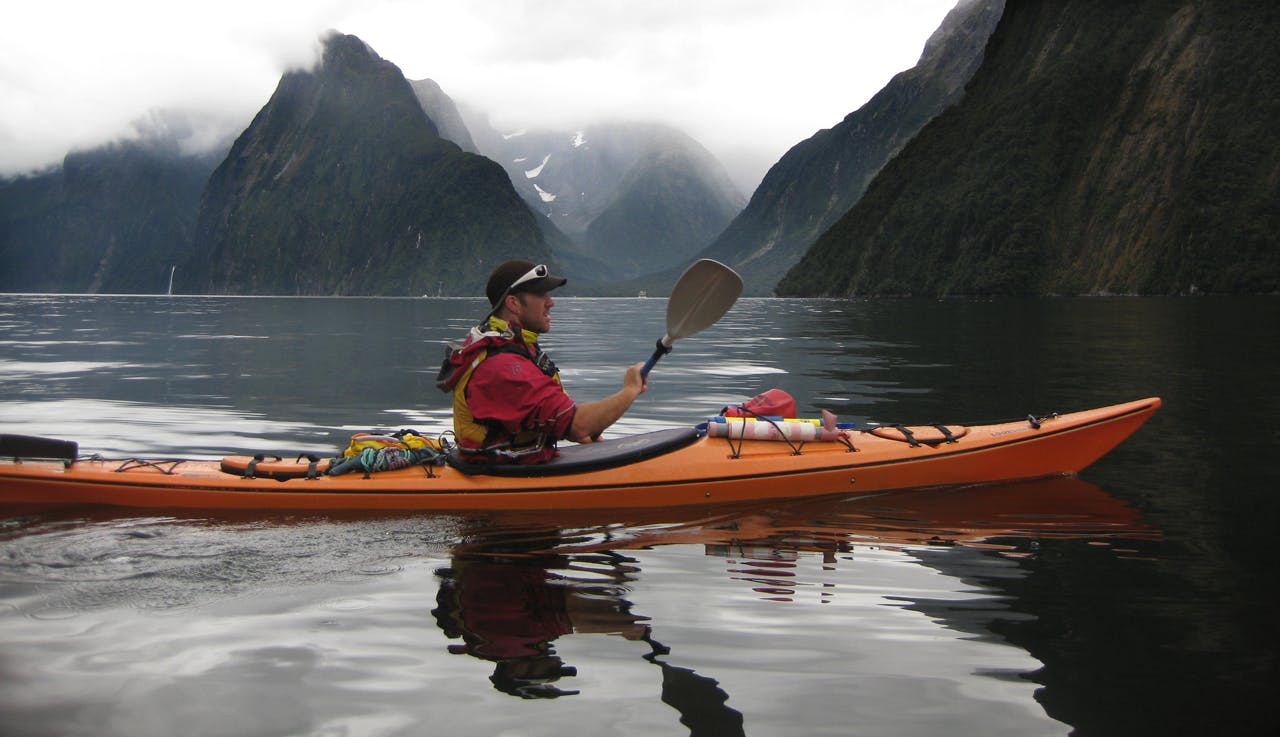
Ben McDowall enjoys another day in his office, in Milford Sound, Fiordland.. Photo: Edith Leigh
Fiordland’s remote Doubtful Sound is one of those places that puts life in, or perhaps out, of perspective, says seasoned sea kayak guide Ben McDowall.
Even after three seasons taking groups of up to eight on overnight and multi-day trips, he still loves it.
When he lists seeing kiwi and hearing dolphins jumping and splashing as they swim past camp in the middle of the night among his highlights, it is easy to understand why.
“You can’t compare anything with Doubtful Sound.”
The kayakers camp overnight at the head of the sheer-sided Hall Arm, where the surrounding mountains are so close and so steep, it takes a while before they see the sun in the morning.
“On the second morning of the trip I always say to my clients ‘I’m not going to say anything for the first couple of hours’. It’s a great chance to go out and just take it in.”
McDowall works for Fiordland Wilderness Experiences and guides in both Doubtful and Milford Sound.
“Milford Sound sells itself,” he says. “There are a lot of boats and a lot of people but that is for a good reason.”
The trips to Milford are day trips, which are a lot of fun, but McDowall says he likes getting to know people better on the longer trips.
In their first season the guides don’t go longer than overnight, but multi-day trips give the opportunity to explore, weather permitting.
On one trip McDowall paddled up the Camelot River, which comes out into Bradshaw Sound, one the many arms off Doubtful.
“It really is primeval New Zealand. I’m dying to get there again.”
Fiordland, however, is also known for its rain and sandflies, and some days the wet, the cold, the bugs and sleeping on the ground can get to you, he says.
Heavy rain can make for sleepless nights and the most rain he experienced in 24 hours was 240mm.
The waterfalls the next day were nothing short of spectacular, he says.
McDowall used to spend the off-season taking British soldiers canoeing in Canada, but now he is studying towards a Bachelor of Nursing. His dream is to combine medical knowledge with his outdoor skills and hopefully join bigger expeditions and trips around the world.
For now, however, McDowall is looking forward to getting back into Doubtful Sound for another season of guiding during his three-month summer break.
At a glance
Qualifications: New Zealand Outdoor Instructors Association qualified people preferred.
Hours: Generally six day stints, with long hours looking after guests overnight.
Pay range: Pay averages $180 to $200 a day, with overnight allowances.
Where can you work: Work can be found around New Zealand and globally, but getting jobs is largely dependent on certifications. Some countries will accept New Zealand qualifications, but others require their own national qualifications.
Highlight of the job: Taking people into a place like Doubtful Sound because “it is incredible”.
Worst part of the job: The job can be quite draining, especially when the conditions are bad and it can be mentally challenging.
The Fish and Game field officer
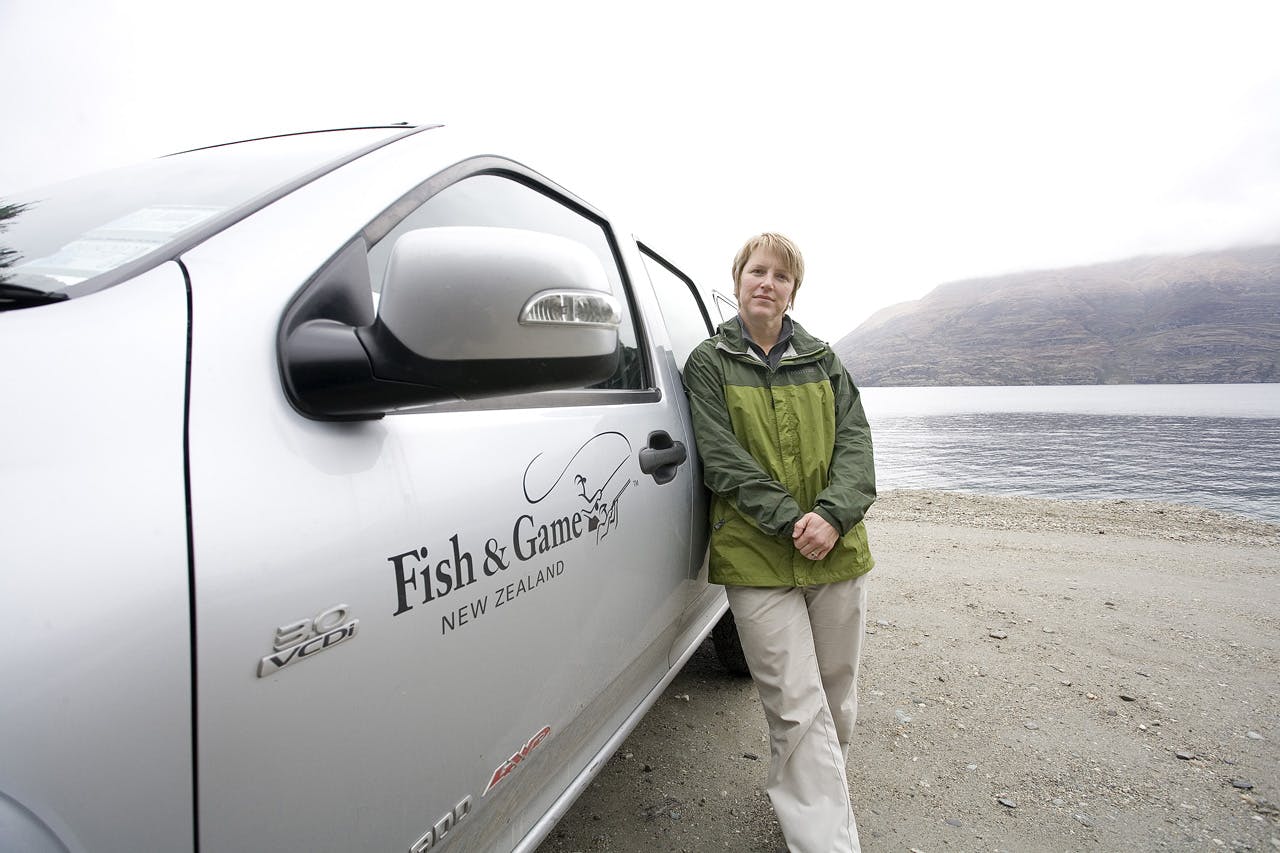
Fish and Game field officer Clare Morris on the job. Photo: Mark Banham
Clare Morris lived overseas and sailed through the Mediterranean, the Caribbean and across the Pacific for nine years, but it wasn’t until she started at Fish and Game that she really began to appreciate her home country.
Now based in Central Otago’s Cromwell, her job as a field officer sees her tramping along streams and rivers through the backcountry around Queenstown.
While she is busy counting fish, or monitoring environmental impacts on rivers, she has also photographed amazing ice formations in creeks, and visited out of the way places like Moke Lake.
“It was fantastic scenery up there. It was just incredible.
“We have been to a lot of places in the world, but it makes you realise what an amazing country we have. We don’t fully appreciate what is right on our doorstep. We tend to think the spectacular places are elsewhere.
“I didn’t realise New Zealand backcountry fishing is some of the best in the world.”
Not every day on the job, however, is all spectacular scenery, Morris says.
The day before she spoke to Wilderness she waded across a stream in bare feet to keep her boots dry, which doesn’t sound that bad – apart from the foot of ice on either side of the stream.
A big part of her job is monitoring fisheries, both fish numbers and the environment they live in. She also checks fishing licences and catches, cruises the local lakes in a patrol boat, provides education, works at improving access for anglers, and the inevitable office work.
“At the end of the day I’m here to meet the needs of the anglers.”
Fish and Game also look after game bird hunting.
“I had to get my head around the duck-hunting thing, which I had no knowledge of, apart from eating them.”
While most people are good to deal with, occasionally people kick up a fuss, Morris says.
With duck hunting especially, firearms were usually seized if people had broken the rules and “people can get quite upset when you take their guns away.”
During her job interview when she was asked if she would mind spending the odd night out in the field, she couldn’t believe it.
In fact, she was so thrilled at the idea she had to double check Fish and Game would be paying her to do this, and not expect her to pay them.
At a glance
Qualifications: Generally a university science degree, majoring in a subject such as ecology or zoology.
Hours: Forty hours per week, but they can be “all over the place”, including weekends and public holidays. Field officers generally have a mix of two to three days in the office and two to three in the field, depending on the season.
Pay range: $40,000-$70,000.
Where can you work: Fish and Game operate throughout New Zealand, but jobs are highly sought after.
Highlight of the job: Getting out and about in the backcountry.
Worst part of the job: The office work.
The canyon guide
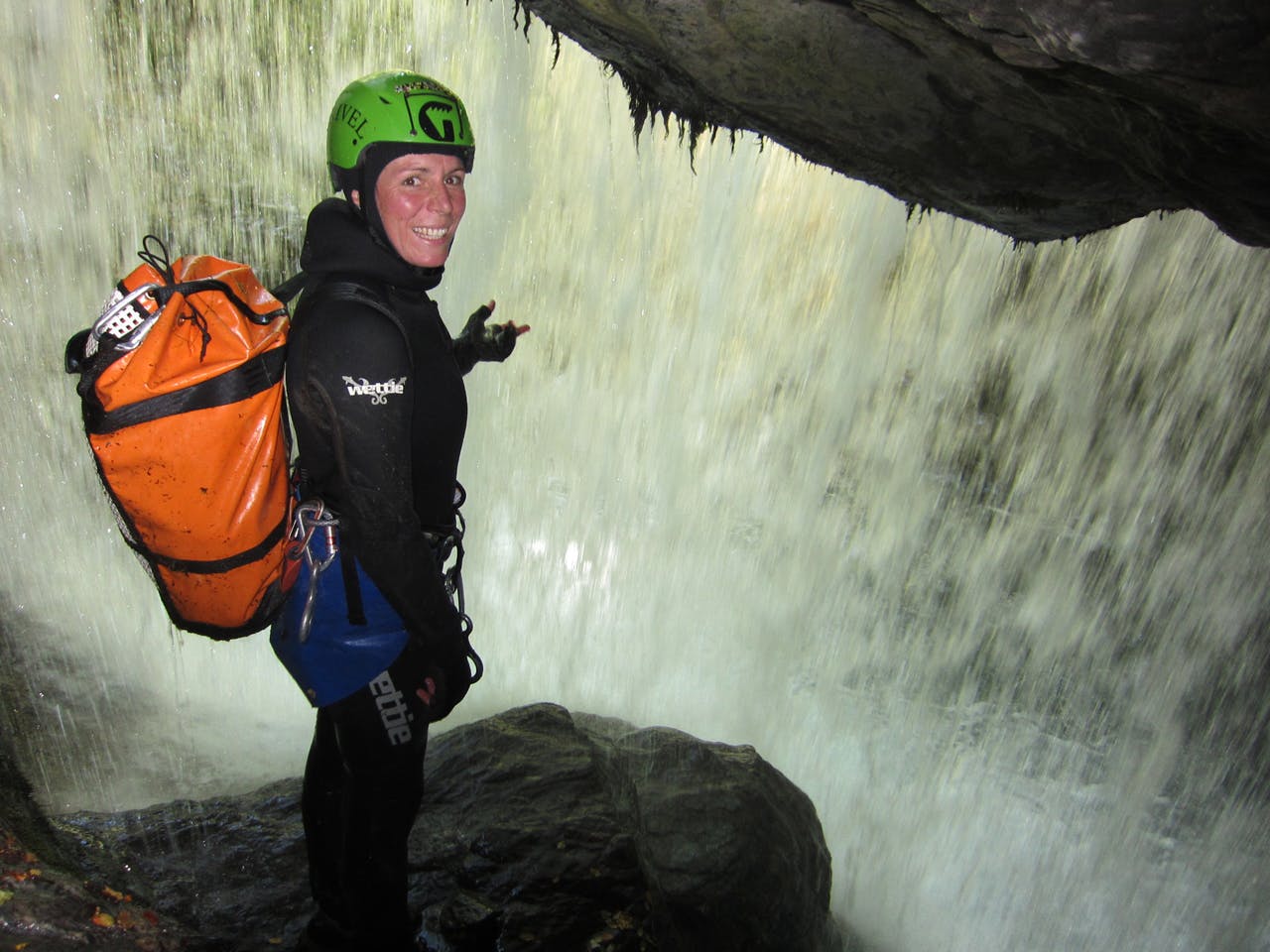
Canyon guide Anna Crafar looks out at the world from behind a waterfall. Photo: Dave Vass
Anna Crafar loves her job as a canyon guide so much, she can often be found in her wetsuit, abseiling down waterfalls and jumping into pools on her days off.
In fact, some days she can’t believe she is getting paid to do what she does.
Canyons are dramatic places, with high walls, moss, “cool lighting and stunningly clear deep blue or green water,” she says.
“It’s a cool environment or place to be. I like taking people outside their comfort zone a little bit and showing them somewhere they would never see on their own.”
Before she began working for Deep Canyon, a canyon guiding company based in Wanaka, Crafar spent five years as a cave guide in Waitomo Caves. Then during a holiday to the southern town she paid to go canyoning and was hooked.
“I thought ‘wow, that’s awesome’. It is like caving with the roof off.”
When Crafar first started guiding people through Wanaka’s canyons she worried they weren’t enjoying their day. People were so quiet, or didn’t laugh at her jokes, but eventually she realised it was actually nerves.
“People deal with their nerves really differently. I tend to start talking and not shut up, but some say nothing.”
Sometimes people are “super nervous, to the point of tears”, but by the end of it they are saying it was the best day of their whole trip, or the most amazing thing they have done in New Zealand.
“Talking to people is my favourite thing,” she says. “I like talking to people all day.”
At the start of last season all the guides went through the remote Wai Rata Canyon. It’s an expensive trip and therefore only runs a few times a season. The day involves a helicopter ride to the top of the canyon, a 100m abseil, sliding down perfectly formed water chutes and finishes with a jet boat ride.
“I was going down it, going ‘wow, I can’t believe this is my job’. It was so spectacular, I was as excited as the customers.”
Occasionally, when she wakes up on a cold day, the thought of having to get into a wetsuit and jump into cold water isn’t that enticing, “but, once you get going it’s all good”, Crafar says.
And right now, it’s a job she wouldn’t give up for anything.
At a glance
Qualifications: An NZOIA canyon guide qualification has just become available.
Hours: It’s a seasonal job. At Deep Canyon in Wanaka the season runs from November to mid-April.
Pay range: Rates for an experienced guide are upwards of $22 an hour. Trainee guides should expect to earn less.
Where can you work: There are canyon guiding companies operating from Auckland, Thames, Canterbury, Wanaka and Queenstown. Canyoning is popular in Australia and around the world.
Highlight of the job: Taking people into an amazing environment they would otherwise never get to see.
Worst part of the job: Finding other work during the off season.





